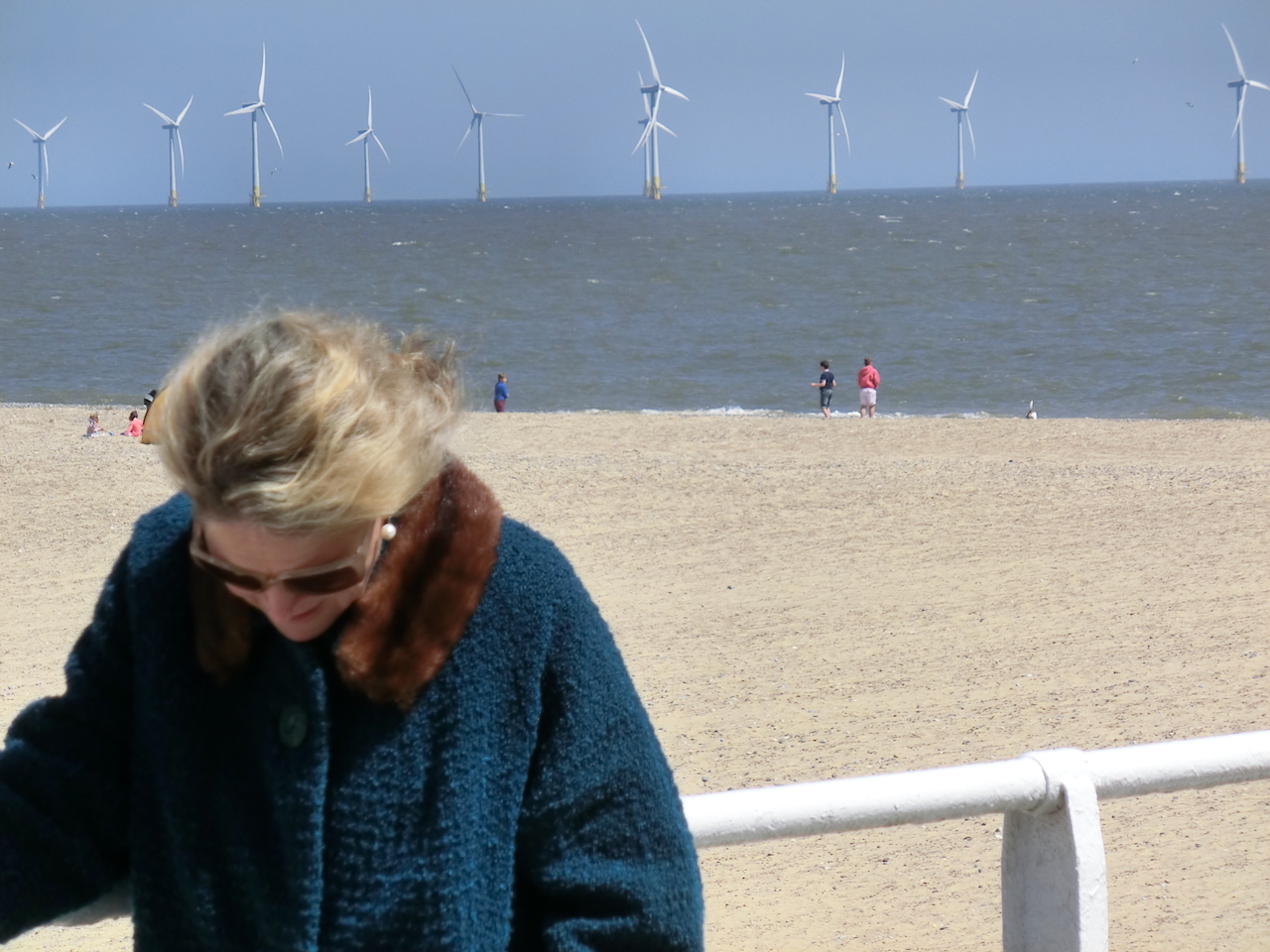The debate between the Coalition and the Labor Party has long had an ethereal dimension. They are in furious contention, though both are promoting a wind/solar future. Labor says it wants to see wind, solar, hydro, and batteries supplying all but 2 per cent of the market, while the Coalition – as per Frontier Economics – says it wants to see a similar profile but with nuclear providing 29 per cent of supply.
After Tony Abbott’s Prime Ministership, the Coalition adopted a Labor-lite electricity policy. Like Labor, it has paid obeisance to the Western world’s prime energy goal of reducing carbon dioxide emissions, though at a reduced pace to that of Labor. It is unclear whether the Coalition actually accepts the ALP view that wind and solar, suitably firmed with controllable power (termed ‘dispatchable’ in the electricity market) is the cheapest form of electricity.
If it does, it is badly advised.
Frontier Economics recognises that nuclear, in most of Australia, cannot meet the costs that are readily achievable with black or brown coal. It justifies its preference for nuclear by asserting that coal stations would need to incorporate carbon capture and storage to receive a social licence, thereby doubling their costs.
In the era of Donald Trump, the credibility of that position is fast
disappearing. Trump will dismantle the coal phobia from January 20 next year, the result of which will see Australia and other OECD countries joining China, India, and other successful ‘third world’ countries in adopting the cheapest form of power. For most of Australia that is coal (nuclear facilities might be competitive in South and Western Australia), for most of Europe and Japan it is nuclear, while for the US it is gas.
Frontier Economics puts Australia’s nuclear costs at $10 billion per 1,000 MW generator with an operation and fuel cost of $30 per MWh. Capital comprises some 74 per cent of nuclear costs and hence a price of $115 per MWh is expected.
The last major official study on costs for Australia, the highly
credentialed Switkowski report on uranium, was issued in 2006 and put the costs of coal-generated electricity without carbon capture and storage at $63 per MWh (in 2024 dollars). This cost is consistent with that of GHD/Solstice, which, in research conducted for the Minerals Council, put the capital cost of coal generators at less than one-third that which Frontier
Economics estimates for nuclear power. The Solstice study assessed the costs for coal-generated electricity (in today’s dollars) at between $49 and $95 per MWh (where stations run 90 per cent of the time).
At $63 per MWh, a coal-based system, in Australia would deliver electricity at about half the price of the nuclear, wind, solar, and battery system modelled by Frontier Economics. Not only is this important for the economy as a whole but without such cost savings, it would not be possible to ensure the survival of the energy-intensive smelting industries. That means closure of aluminium and nickel smelters that are competing against
oil and gas-rich nations and coal-based electricity in Indonesia.
It needs to be understood that renewables can only be built if they are subsidised. The subsidies come in two main forms, one is as renewable energy certificates that provide revenues to wind and solar whenever they run. This puts them in the black as long as the electricity spot price is above minus $31 per megawatt hour. Unsubsidised sources cannot operate at such a loss. A more recent subsidy mechanism is in the form of the Orwellian named Capacity Investment Scheme. Under this, the taxpayer has
guaranteed a premium price (which the government refuses to reveal) for contracted wind and solar facilities, whenever they run.
A coal-based electricity system not only means a halving of the costs of the electricity supply system favoured by the government but the fundamentally intermittent system is impossible to provide reliability except at horrendous costs involving the totally untried technology of long- term battery storage.
Nor could a renewables-dominated system coexist with the high capital cost electricity supply sources that are coal and nuclear. Those generators can only be economic if they operate at around 90 per cent. Spreading the capital cost over lower outputs wrecks their economics. Coal and nuclear, unlike hydro (which has limited fuel supply) and gas (which has lower capital costs), do not complement wind and solar. Or, at least they do not do so if they are obliged to back-off when there is ample wind and solar.
I believe it is wrong to claim, as others have, that ‘nuclear can provide the steady baseload power needed to complement intermittent sources like wind and solar’. Frontier Economics recognises this and its modelling implicitly forces renewable energy supplies to back-off when nuclear is
available. This, together with the constricted increased transmission building that Frontier Economics proposes, is recognised by the chorus of opposition to Frontier Economics’s proposal from the renewable industry’s subsidy-seekers.
Finally, forecasts 30 years ahead in the electricity market have been markedly inaccurate. The aforementioned Switkowski report pictured the 2029/30 electricity supply to be 69 per cent coal and 22 per cent gas; wind and solar were seen as contributing 2 per cent. For 2024, wind and solar have 28 per cent, coal 46 per cent and gas 19 per cent.
****
More information about the author, Alan Moran, at LinkedIn.
This article is republished from Regulation Economics and The Spectator Australia, more information: https://www.regulationeconomics.com/_files/ugd/b6987c_fbfc8e7c36754271b753ff50d90ac715.pdf
The feature image is of me, Jennifer Marohasy, in the UK where the King gets a royalty from every wind farm.


 Jennifer Marohasy BSc PhD is a critical thinker with expertise in the scientific method.
Jennifer Marohasy BSc PhD is a critical thinker with expertise in the scientific method.

Jennifer
Wind turbines are bogus and do not produce the essential and legally required 50 hertz energy.
They certainly do not produce more the faster they spin. Fallacy.
The government refuses to reveal certain information for a very good reason.
The code requires all generation to be synchronised. You may wish to ponder and enquire just how does a wind turbine synchronise to the grid.
The requirements for generators are
Produce an exact 50 hertz
Synchronise to the grid
Not to supply non-compliant energy
Not to change the characteristics of the grid.
To have a speed droop governor.
No rising dangerous or unsafe earth voltages
Cheers
Brian
Never mentioned: Best use of old epoxy’s \ turbine blades, to be replaced every two years due to stress fractures. Batteries, only store electricity, long term damage to the environment. Companies going off shore due to expensive energy. Damage to environment trying to save it. I fear our GG Grand kids will call our generation avocados, green outside & nuts inside.
It seems to slip out of many posts on electricity generation that there is no danger from man-made carbon dioxide emissions: they do not cause detectable global warming. Let me say it again: man-made carbon dioxide emissions cause no detectable global warming. If they cause any, it is less than the the natural variations.
Net zero is pure world government Marxist agitprop. Even the Liberal Party has fallen for it.
If coal fired power stations are cheapest, they should be kept going and more should be built. Nothing wrong with nuclear, but it should be used only when it is the cheapest.
I am being censored here. It is often not said that anthropogenic global warming is a pure scam. It seems that I have to word this to evade the censor. Coal fired power stations are the way to go. It is dreadful that even the Liberal Party has fallen for the net zero nonsense.
Oh, sorry, I wasn’t censored after all. I was confused by a notice that said I had already said so.
Not sure why we use pollution per head of population when it’s the overall CO2 pollution is what matters. It’s surely a plot by the main polluters to obviate their responsibilities. Or is this concept too simplistic?
Very interesting article indeed.
Responding to Michael Price says December 18, 2024 at 1:13 pm
Not sure why we use pollution per head of population when it’s the overall CO2 pollution is what matters. It’s surely a plot by the main polluters to obviate their responsibilities. Or is this concept too simplistic?
Dear Michael, CO2 is not a pollutant. It’s the key plant food. Man-made CO2 emissions do not cause detectable global warming. The idea of ‘Net Zero’ is nuts.
Brown coal is the cheapest form of energy and the State of Victoria has an abundance of it. Generally speaking both Anthracite and Lignite coal should be the backbone of our energy supply requirements. Alas, being a stupid country with inept leaders we will follow the hardest and most expensive options. Nuclear is not necessary.
Responding to ‘GlenM says December 18, 2024 at 3:55 pm
Brown coal is the cheapest form of energy and the State of Victoria has an abundance of it. … Alas, being a stupid country with inept leaders we will follow the hardest and most expensive options. Nuclear is not necessary.’
Champion, GlenM !!
“Not sure why we use pollution per head of population when it’s the overall CO2 pollution is what matters. ”
There it is. CO2 is NOT pollution. It is literally the stuff of life. Plants and crops cannot exist without it and humans are carbon life forms. Blaming CO2 is misanthropic and anti life. And there is a lot of misanthropy on the side of the alarmists.
The renewables push is merely secondary to the real issue of global boiling and the anti CO2 rubbish.
It’s time for more scientists to come out and vehemently oppose the worst scientific lie ever: AGW.
‘Humankind has never known what it is to live outside an Ice Age – and probably never will’….(Alex S. Gaddes, ‘Tomorrow’s Weather’ 1990.)
Cohenite, lots of things that are “the stuff of life”, are dangerous in excess.
The reaction of Water Vapour Albedo in the upper atmosphere with charged particles expelled from the Sun, replaces the water vapour that would normally be precipitated back to the surface, with the ‘separated’ Hydrogen and Oxygen.
This is the basis for the Orbital Solar- induced Dry Cycle Hierarchies.
In Search of the ‘X Factor’;
The possible production of Ozone (O3) via the reaction of expelled Solar elements with water vapour in the upper atmosphere.
A clue:
Fukushima 2011 – the conversion of water vapour to Oxygen and Hydrogen via the reaction of steam with Zirconium.
NRDC (Natural Resources Defense Council) REPORT, March 2014,
(pp 15-17).
‘ If local fuel-cladding temperatures were to approach 1,800° F, the cladding would incur additional heating from the exothermic (heat-generating) reaction of its zirconium content with the steam present in the reactor core. This chemical reaction is variously referred to as a “metal-water reaction,” zirconium-steam reaction,” or “zirconium oxidation.” The latter term is used because the zirconium-steam reaction produces zirconium dioxide (ZrO2), in addition to hydrogen and heat.’
‘Practically speaking… [zirconium] oxidation runaway comes in… due to the heat of the oxidation reaction increasing generally faster than heat losses from other mechanisms… [I]f peak [fuel-cladding] temperatures remain below 1000° C
[1,832° F] you will probably escape the runaway [oxidation], but if you get to
1,200°C [2,192° F]’ you will probably see the oxidation “light up” like a 4th of July sparkler (literally that’s what it looks like) as it goes into the “rapid oxidation” regime.’
– Randall O. Gauntt, Sandia National Laboratories.
Note;
Zirconium is just one of the metallic elements expelled to Earth from the Sun – ( see reference on p128, to S. Bjorck’s paper on the ‘flickering Sun’ and the associated expulsion of Beryllium.)
Bjorck S. et al. High resolution analyses of an early Holocene climate event may
imply decreased solar forcing as an important solar trigger.
Geology 29, 1107 – 1110 (2001)
‘Extract from ‘Tomorrow’s Weather’ – thirty years on….(Don Gaddes, 2022. p 203)
“Cohenite, lots of things that are “the stuff of life”, are dangerous in excess.”
You mean like wine, women and song.
Just filing this here, another note from Alan Moran:
“I have skimmed the Final Report of the Select Committee on Energy Planning and Regulation in Australia, which is now published. The Chairman Senator Van relied strongly on Bruce Mountain, whose views on the excesses of network spending are sound (though he thinks we should decarbonise, generate from rooftops and all have our own storage). His main call is for a PC Review.
Senators were divided in their recommendations along Party lines.
Perhaps the best part is the semi-dissenting comments by Senator Canavan who rails against the decarbonisation that is the basis of the present planning framework.
Unfortunately, instead of abandoning the Capacity Investment Scheme he argues “The Australian Government should expand its Capacity Investment Scheme to include all types of power, including coal, gas and nuclear.” Ends.
Keith Pitt walks.
‘Mr Pitt has increasingly become an outside voice on climate change within the Coalition since the Morrison government.
‘Several of his colleagues who share his scepticism like Gerard Rennick, George Christensen and Craig Kelly have either left parliament or quit the party.’ (ABC)
A recent poll has the nuclear power lobby in front, but if Donald says global warming is a hoax then we can expect a return to coal.
https://poll.lowyinstitute.org/charts/australia-using-nuclear-power-to-generate-energy/
The Broken Hill fiasco.
https://judithcurry.com/2024/12/05/wind-and-solar-cant-support-the-grid/